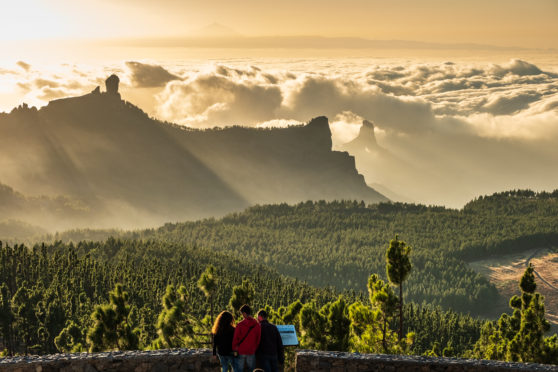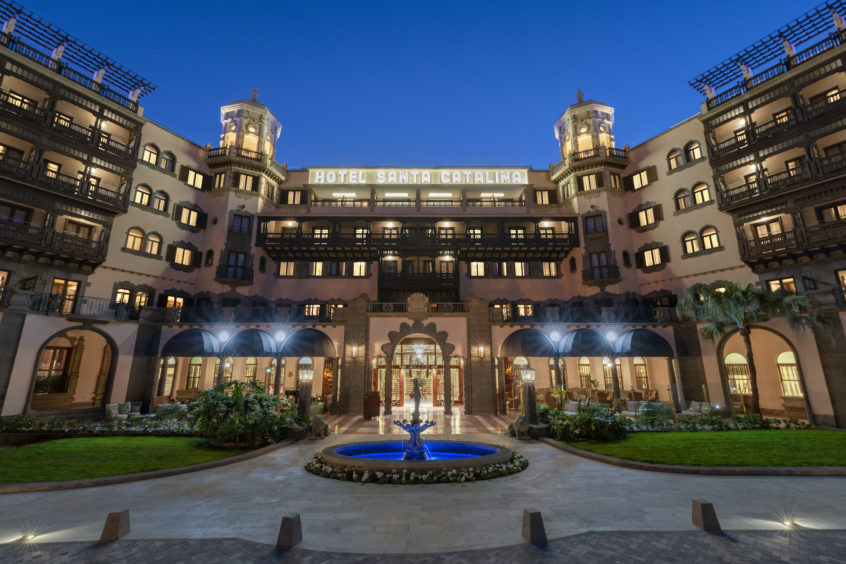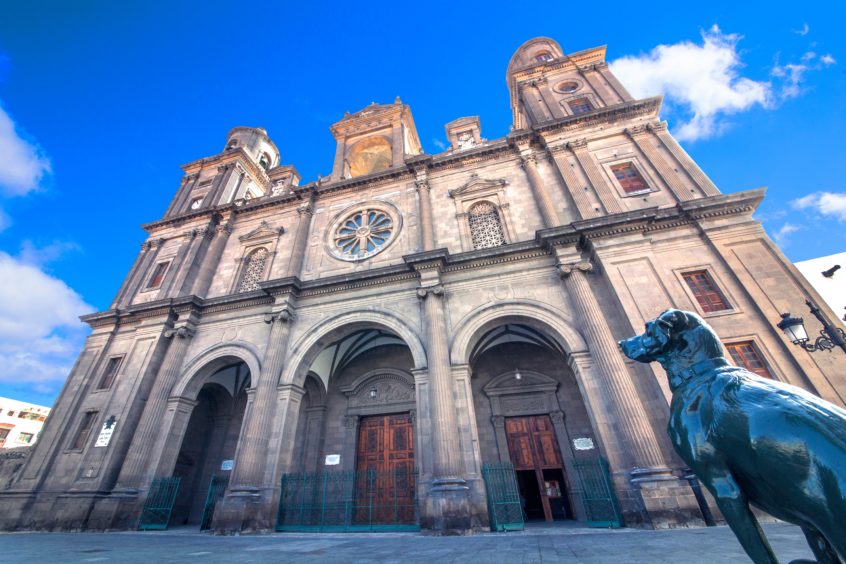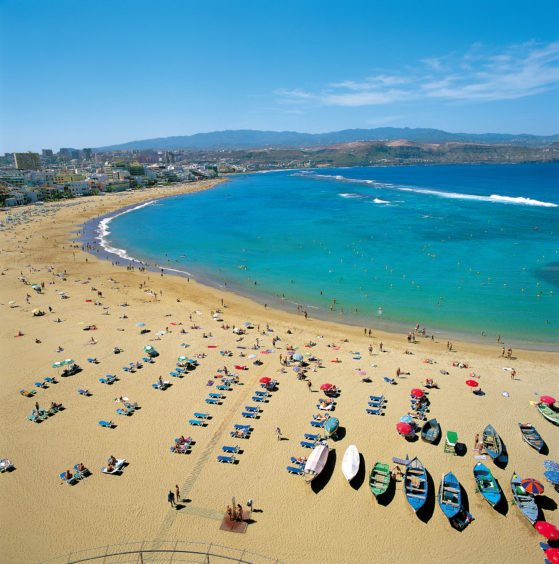
The world’s first travel writer, the Roman author Pliny the Elder, described the Canary Islands as “The Fortunate Islands”.
We certainly feel fortunate as we arrive on Gran Canaria. a gorgeous island that has history and untouched natural beauty coming out of its ears.
Although it is a fabulous and reliable destination for those in search of winter sun, Gran Canaria also has a vibrant cultural life away from the beach.
That is undoubtedly true of the hotel where we are staying, the classy Santa Catalina, situated in the centre of the capital, Las Palmas de Gran Canaria.
Built in 1890 by wealthy British merchants developing the city into what was to become the world’s second port after New York, the 204-room hotel is the oldest and the most elegant in the Canary Islands.
Boasting a Spanish colonial front – with impressive carved dark-wood balconies – a rooftop infinity pool and a delightful garden dotted with palms and dragon trees, the Santa Catalina has recently reopened after a major, 18-month refurbishment.
From its doormen dressed in red uniforms with matching pillbox hats to the bedroom TV sets disguised as mirrors inside an ornate gilt frame, the hotel exudes old-school refinement.
Down the road from the Santa Catalina is the Old Town. Free of cars, it has kept its medieval charm and there you can visit the Casa de Colon (Columbus House), behind the Cathedral Santa Ana. It was at this house Christopher Columbus stopped three times on his voyages to America, beginning in 1492.
Columbus, however, went to his grave believing he had landed in India, a fact that prompted some historians to dub him “the biggest idiot in history”.
Driving half an hour north out of Las Palmas, we visit Cenobio de Valeron, a network of 350 man-made caves carved into a sheer cliff face of the Montaña del Gallego.
More than 800 years ago, the ingenious indigenous people – the Guanche – hollowed out these caves as grain stores. On the site, archaeologists have found the clay stamps each family used to identify its silo.
The Guanche also created a whistling language called Silbo. It was banned under the dictator General Franco, who feared people might use it to plot against him. It is still spoken in the mountainous areas of Gran Canaria and is protected by UNESCO.
The Guanche were brave as well as inventive. Such was their resilience, it took invaders 81 years to conquer the small island.
When the aboriginal people were confronted with defeat by the Castilian army in 1483, their leader, Bentejui, and his shaman, Faycan, hurled themselves off a cliff top rather than surrender.
As they tumbled, they cried “Atis Tirma”, which means “for my sacred land”. A statue depicting their fall stands outside the Santa Catalina.
Returning to Las Palmas, we hike through Los Tilos de Moya, a laurel forest – the last on the island. A haven where the only sound is birdsong.
We then drop in at the Finca La Laja, one of the only coffee plantations in Europe and the most northerly one in the world.
Located in a sheltered valley in the Tamadaba National Park outside the village of Agaete, the plantation grows not only coffee, but grapes, oranges, mangoes, guava, paw-paw and avocados.
After strolling through the 12-hectare orchard, we take a seat in the Finca’s restaurant, underneath a shady pergola criss-crossed by vines. Overlooking spectacular mountains, we are served tapas, including cheese smothered in a delicious coffee-flavoured apple jam made on the premises.
We also sample the fresh coffee and wines produced at the Finca.
The eye-catching labels on its wine bottles are drawn by local artist Pepe Damasco, who also painted the striking murals that adorn Gran Canaria airport.
Locals say that when you leave the island, you will only be able to see the murals through floods of tears. As we bid farewell to this lovely island, we know exactly what they mean.
An impressive list of past guests at the Hotel Santa Catalina includes Agatha Christie, Winston Churchill, Prince Charles, Naomi Campbell, Brad Pitt, Maria Callas, Ava Gardner and Gregory Peck (who stayed there while filming Moby Dick) – a line-up that could fill several series of Fantasy Celebrity Big Brother.

Enjoy the convenience of having The Sunday Post delivered as a digital ePaper straight to your smartphone, tablet or computer.
Subscribe for only £5.49 a month and enjoy all the benefits of the printed paper as a digital replica.
Subscribe

 © Shutterstock
© Shutterstock